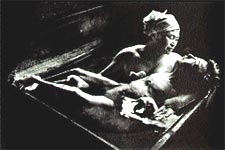Mercurial deaths
 In 1907, the Chisso Corporation built a factory for manufacturing petrochemicals and plastics in a small fishing village of Japan situated along the shore of Minamata bay. From 1932 to 1968, the corporation dumped an estimated 27 tonnes of mercury compounds into the bay. The first signs of the effects of this dumping began to surface in 1925, when the fish population started declining. But it was only during the mid-1950s that the effects were seen in animals and humans, who consumed the fish. Birds started dying. People began to experience numbness in their limbs and lips. Their speech slurred and their vision got constricted. Some even suffered brain damage.
In 1907, the Chisso Corporation built a factory for manufacturing petrochemicals and plastics in a small fishing village of Japan situated along the shore of Minamata bay. From 1932 to 1968, the corporation dumped an estimated 27 tonnes of mercury compounds into the bay. The first signs of the effects of this dumping began to surface in 1925, when the fish population started declining. But it was only during the mid-1950s that the effects were seen in animals and humans, who consumed the fish. Birds started dying. People began to experience numbness in their limbs and lips. Their speech slurred and their vision got constricted. Some even suffered brain damage.
Most victims complained of severe convulsions, intermittent loss of consciousness, repeated lapses into crazed mental states and then finally slipped into coma. With the onset of a very high fever, they would die. As of 1992, the number of people officially diagnosed as having
Related Content
- Rhino slaying brings KZN's toll to 128
- ‘Fish deaths over the years expose pollution in Vashi creek’
- Air pollution linked to increased deaths from heart disease
- Weak EU air pollution standards risk thousands of lives, says report
- Judgement of the Supreme Court of India regarding occupational health services in Coal Fired Thermal Power Plants (CFTPPs) of India, 31/01/2014
- European coal pollution causes 22,300 premature deaths a year, study shows
